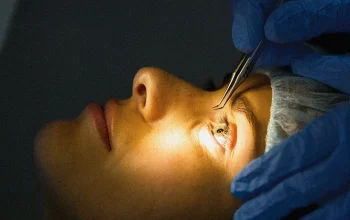Having knee replacement surgery is a great way to relieve pain and improve joint function. A knee replacement, also known as knee arthroplasty, replaces the weight-bearing surfaces of the knee joint.
Partially knee replacement
Performing a partial knee replacement is a surgical procedure that can restore normal motion and relieve pain in people suffering from arthritis. The procedure removes damaged tissue from the knee and replaces it with artificial parts. It is most commonly recommended for patients who have limited mobility due to arthritis, but it can also be performed on younger people.
Before a partial knee replacement is performed, the doctor will review the patient’s medical history and determine whether the patient is a good candidate for the procedure. He or she may also perform tests to determine the extent of the damage. These tests can include X-rays, an MRI scan, and a physical examination.
X-rays
X-rays for knee replacement surgery are performed to evaluate the condition of the joint. This helps the surgeon to determine whether surgery is necessary, how to proceed, and what to expect. X-rays also help diagnose arthritis.
Knee X-rays can reveal arthritis, a condition where the joint becomes swollen and painful. Arthritis can be caused by trauma, osteoarthritis, and rheumatoid arthritis. Arthritis is a degenerative disease that can lead to cartilage and bone breakdown in the joint. X-rays are a painless procedure that can be done at home or in the doctor’s office.
X-rays are often taken with the patient standing. This is more useful than X-rays taken lying down.
General anesthesia
Choosing the best type of anesthesia for knee replacement surgery is a decision that needs to be made with the help of a physician. Some patients may choose spinal anesthesia, while others prefer general anesthesia.
Before surgery, an anesthesiologist will work with the surgeon to evaluate the patient and help determine which type of anesthesia would be best. Anesthesia is a safe and effective way to perform joint replacement surgeries.
Total knee arthroplasty is one of the most common operations in the United States. The operation involves replacing worn ends of the bones in the knee joint with metal and plastic parts. It is expected that the number of surgeries will continue to increase.
Nerve block
Using nerve blocks for pain management after knee replacement surgery can be effective. But, there are some complications.
A nerve block is an injection of medication that blocks pain signals coming from a specific nerve. The pain isn’t completely gone after a nerve block, but it should relieve discomfort for several days or weeks. In addition, nerve blocks can be used in conjunction with oral pain medications.
There are different types of nerve blocks, including genicular and peripheral nerve blocks. Gicculular nerve blocks are particularly useful for patients undergoing total knee replacement. They help reduce pain, improve comfort, and allow patients to have lower opioid dosages.
Peripheral nerve blocks also decrease pain after surgery. Patients have more pain relief after a peripheral nerve block than they do after an IV medication.
Physiotherapy
Physiotherapy after knee replacement surgery can make a difference in your recovery and help you to regain strength and range of motion. It may also speed up your recovery.
The best way to get started is to see your doctor and get some specific instructions. They will tell you about the exercises to do and how to care for your new knee. You should also get periodic check-ups and see how the knee is doing.
Your doctor may prescribe medications to help you with pain and swelling. They will also tell you about the exercises to do to help you with range of motion. They will also tell you about the exercises that you can do at home to help you recover.
Recovery
Depending on the type of knee replacement surgery you have, it can take up to six months to fully recover. While the recovery process varies for each patient, following some common practices can help ensure a speedy recovery.
The first week following knee replacement surgery is typically a time to rest and recuperate. You should avoid walking and driving for this period, as well as high impact exercises. It’s also a good idea to get restorative sleep.
Another important recovery measure is to wear a knee brace. This can help reduce swelling and pain. It’s also important to keep the incision site dry. Moisture can attract bacteria.




